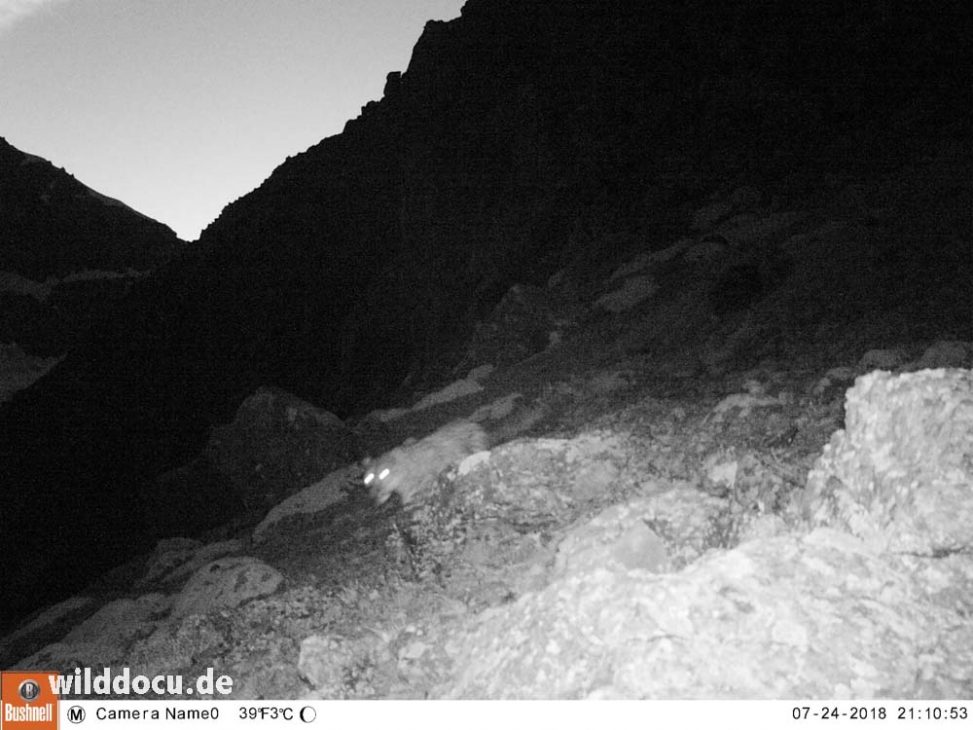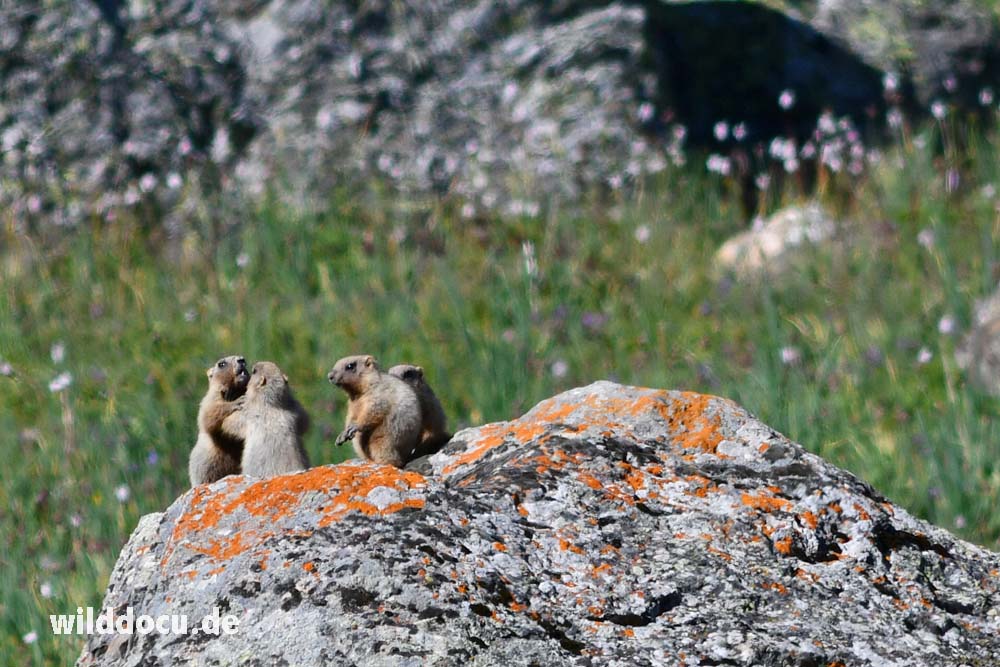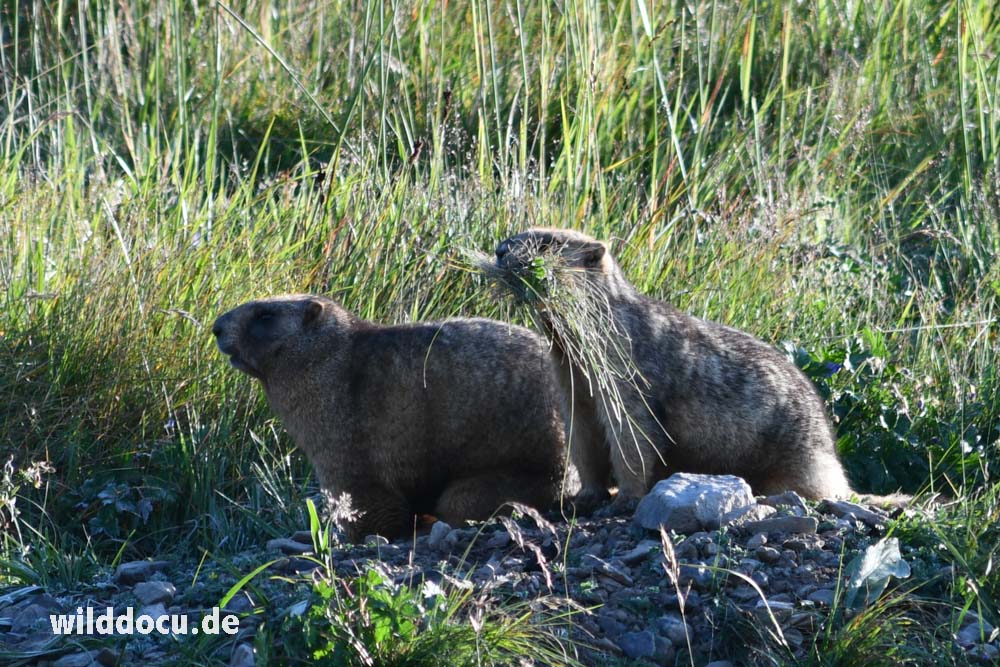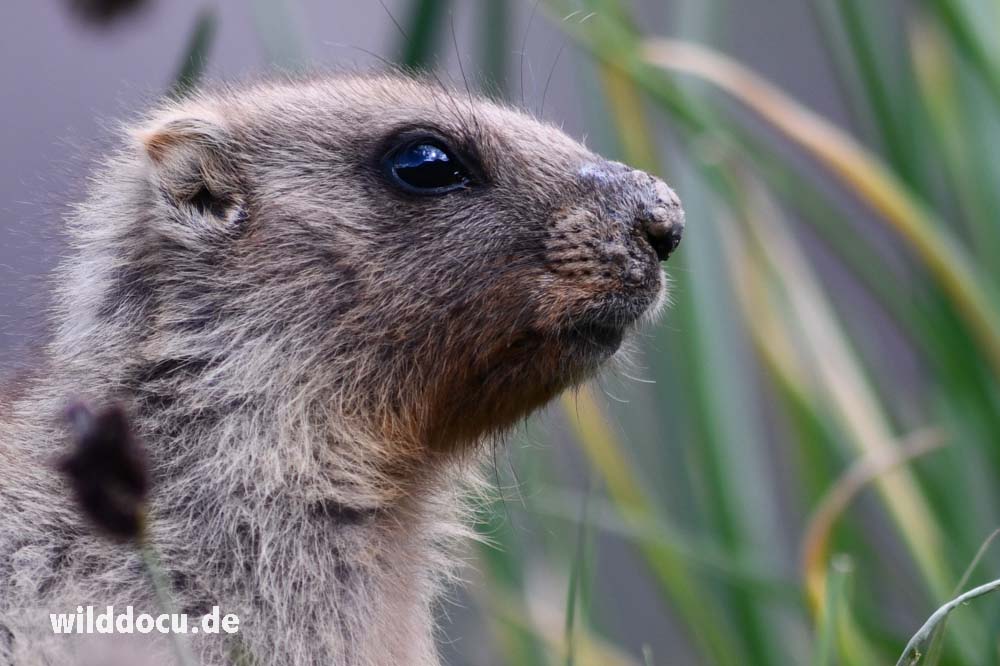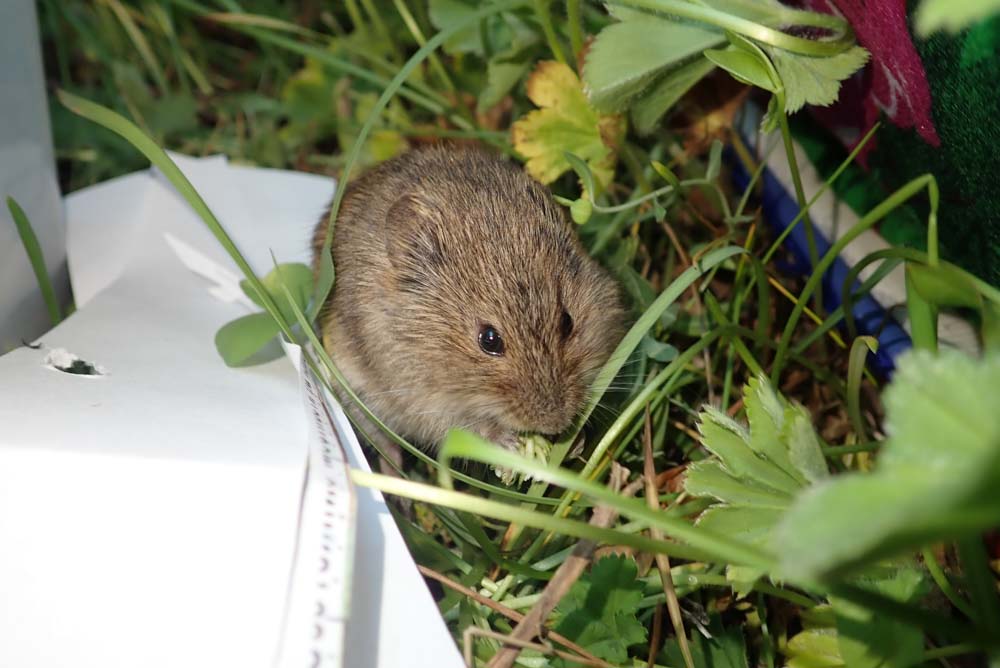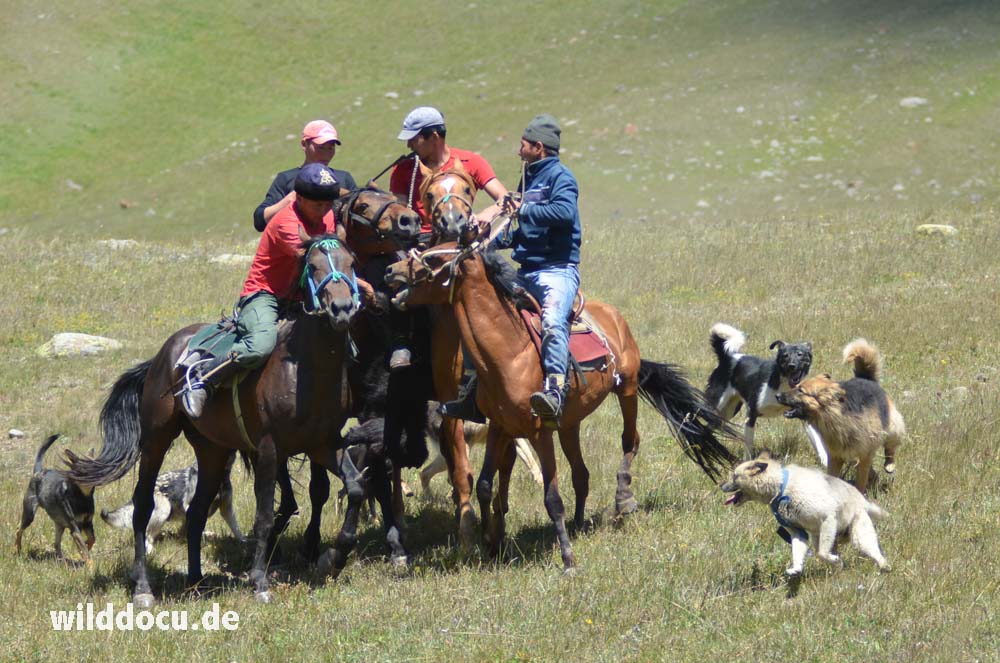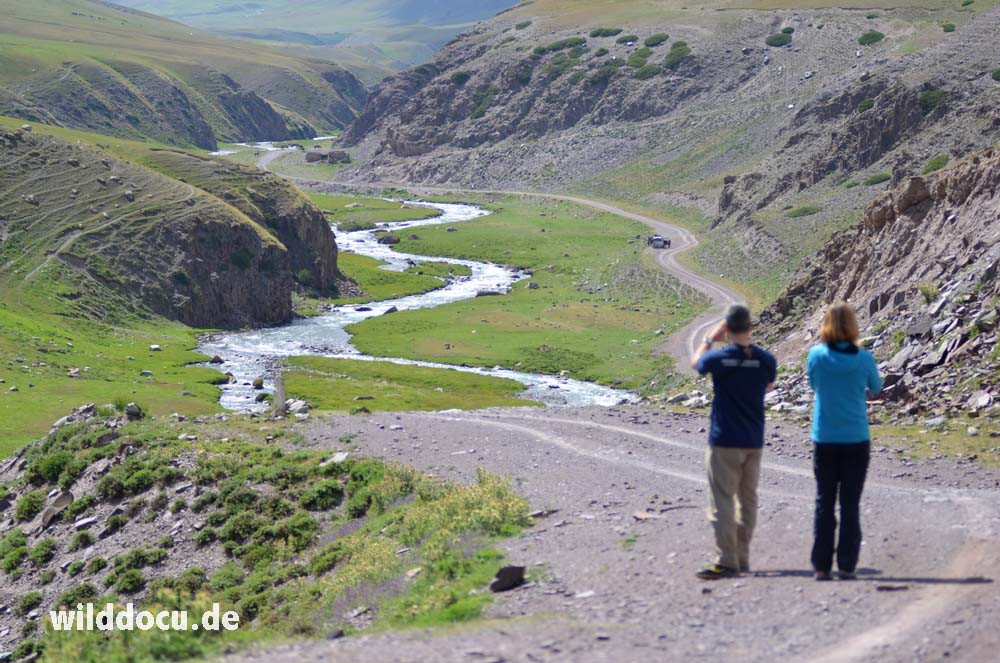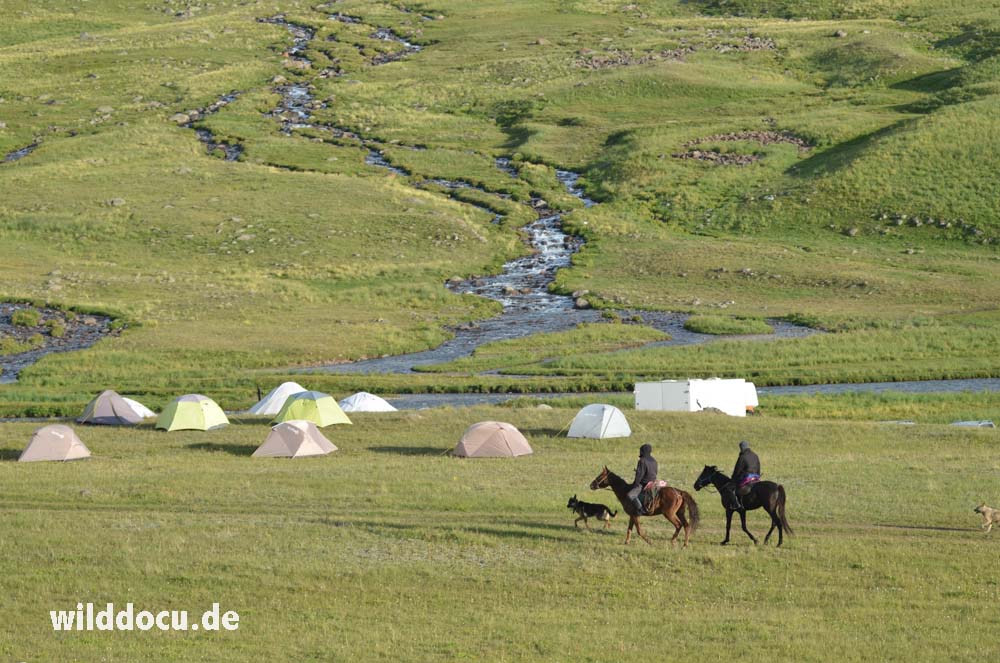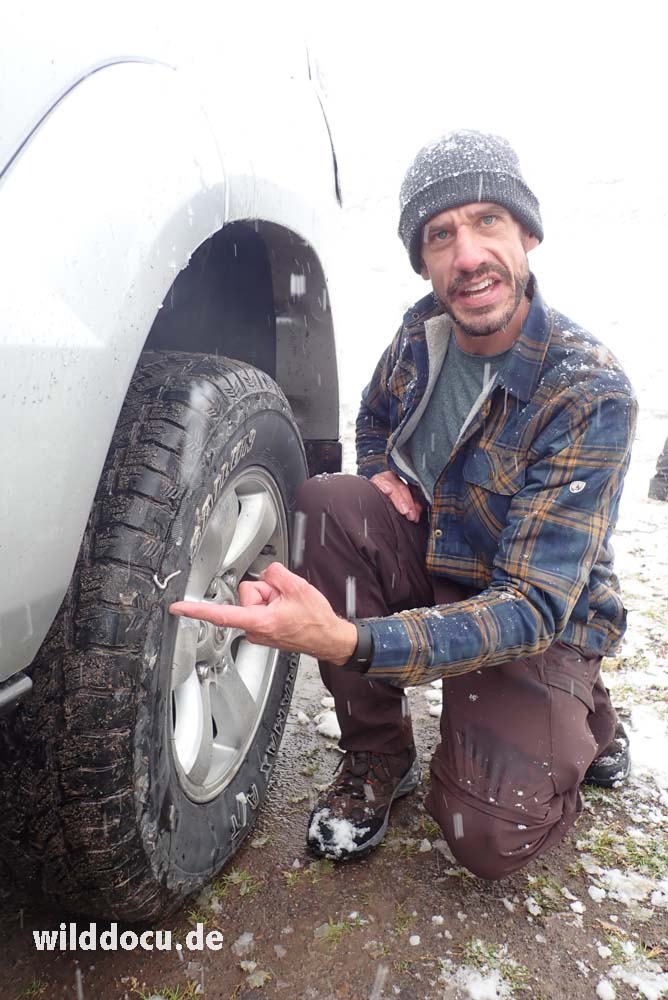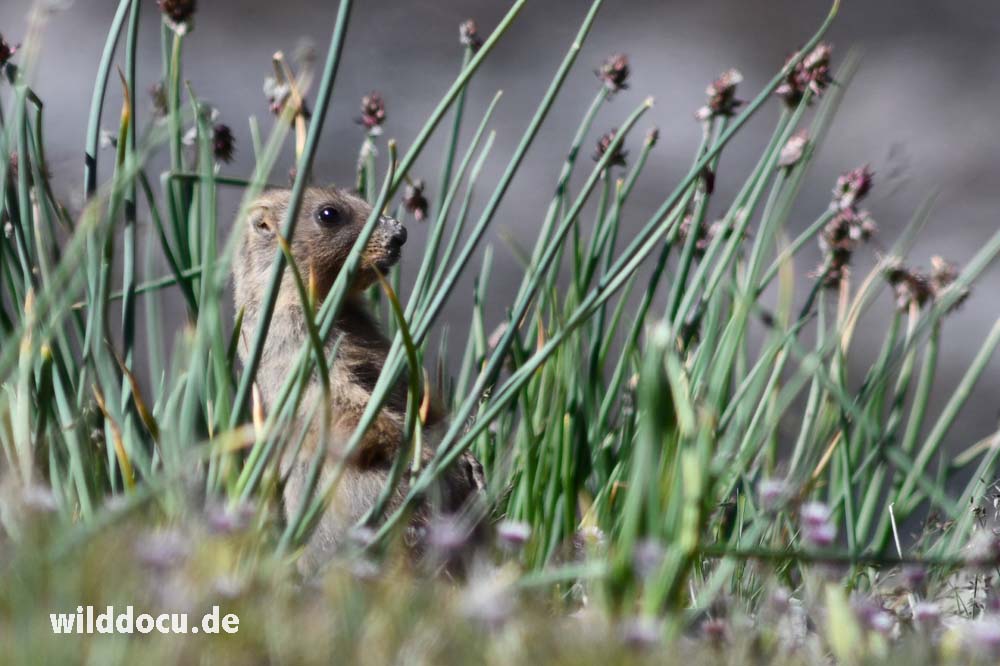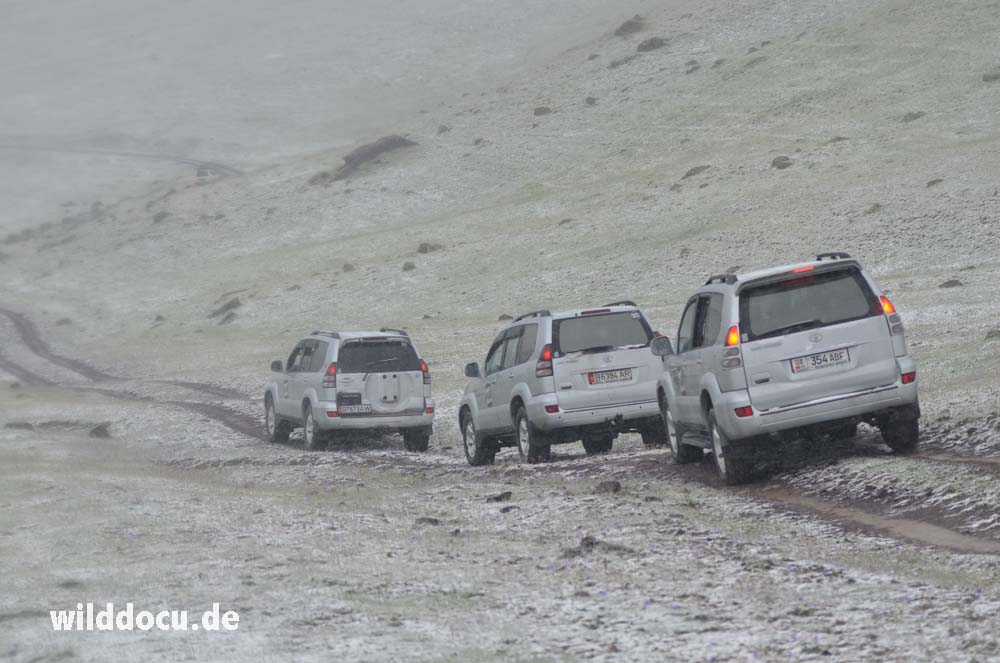From July 30th to August 12th 2018 I had the pleasure to be on a „Biosphere Expeditions“-Trip to support a conservation project regarding the very elusive Snow Leopard in the Tien Shan Mountains of Kyrgyzstan.
Summary
To make it clear right here in the beginning: Although we did see and documented the presence of native wildlife – actually some great species such as the key species, the Snow Leopard, and Tien Shan Ibex – this trip was not meant as a wildlife watching trip. Instead it is a citizen science and wildlife conservation project to assess wildlife numbers and work towards protected status for the area and thus enhance the current situation so that wildlife – and mammal-watchers! – can benefit in the future.
Although it was tough filling up my species list, I would not hesitate to go on this trip again. I just loved the remote, spectacular and beautiful Tien Shan mountains. And it was fun working for mammals as part of a small international team from a mobile tented base camp set at an altitude of around 2000 metres.
After a training phase of a couple of days, we would spend each day taking the expedition vehicles to our assigned survey sites and then, on foot, looking for tracks, kills, scats and the animals themselves, and setting camera traps.
I enjoyed true expedition-style base camp conditions, testing but satisfying mountain surveying, off-road driving and breathtaking high mountains. All this makes it a challenging, but very rewarding expedition.
Mammal species encountered

Snow Leopard (Panthera uncia): Our group was the first one since the start of the study four years ago to capture THE GHOAST on camera trap. Photo: Biosphere Expeditions / NABU

Central Asian ibex (Capra sibirica alaiana): We captured this magnificent male on the very last day before departure.
We also saw diggings of Asian badgers (Meles leucurus) and an Ermine (Mustela erminea) on camera trap.
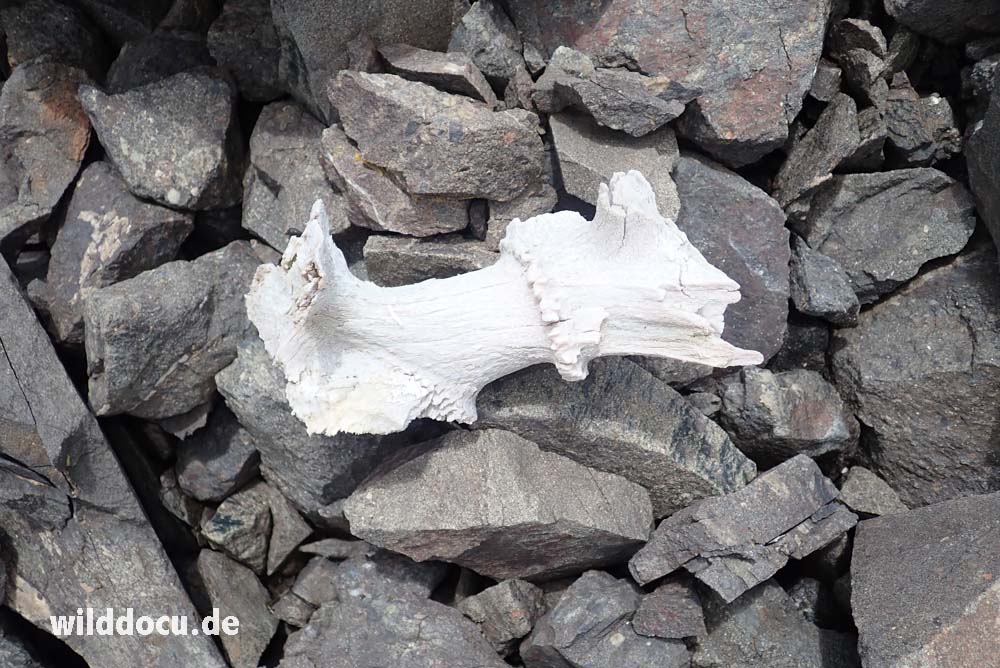
Very high up near a glacier, we found this scull fragment of a Red Deer (Cervus elaphus), only the second piece of evidence that this species once roamed the area.
Argali (Ovis ammon) I was very much hoping for, but there was no sign of this species at all.
Upon arrival in Bishkek check Oak Park in the city centre for squirrels, which should be Eurasian Red Squirrels (Sciurus vulgaris).
Go this way for my Tien Shan birds.
Geography
Kyrgyzstan is a country located in Central Asia and often referred to as the „Switzerland of Central Asia“. Landlocked and mountainous, Kyrgyzstan is bordered by Kazakhstan to the north, Uzbekistan to the west, Tajikistan to the southwest and China to the east. Its capital and largest city is Bishkek.
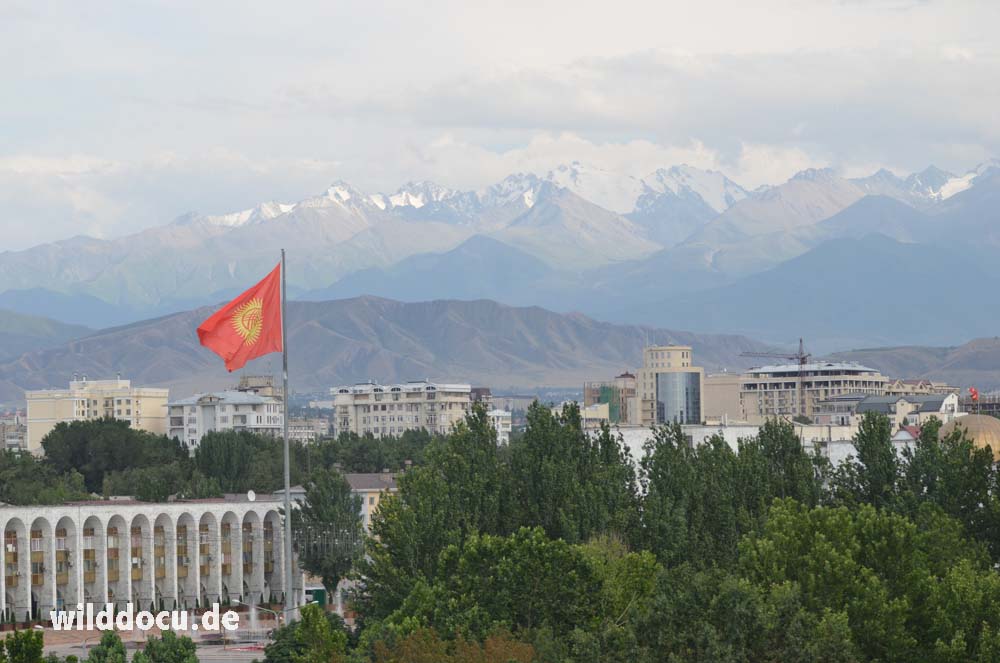
Straight to the south of Bishkek the Tien Shan rises. Take the big wheel downtown to get an overview of the area.
Kyrgyzstan is further from the sea than any other country and all its rivers flow into closed drainage systems, which do not reach the sea. The mountainous region of the Tien Shan covers over 80 percent of the country, with the remainder made up of valleys and basins. The highest peak is Jengish Chokusu (Pik Pobedy) 7,439 m. More than half the country is above 2,500 metres. The climate in Kyrgyzstan is continental with a small amount of rainfall.
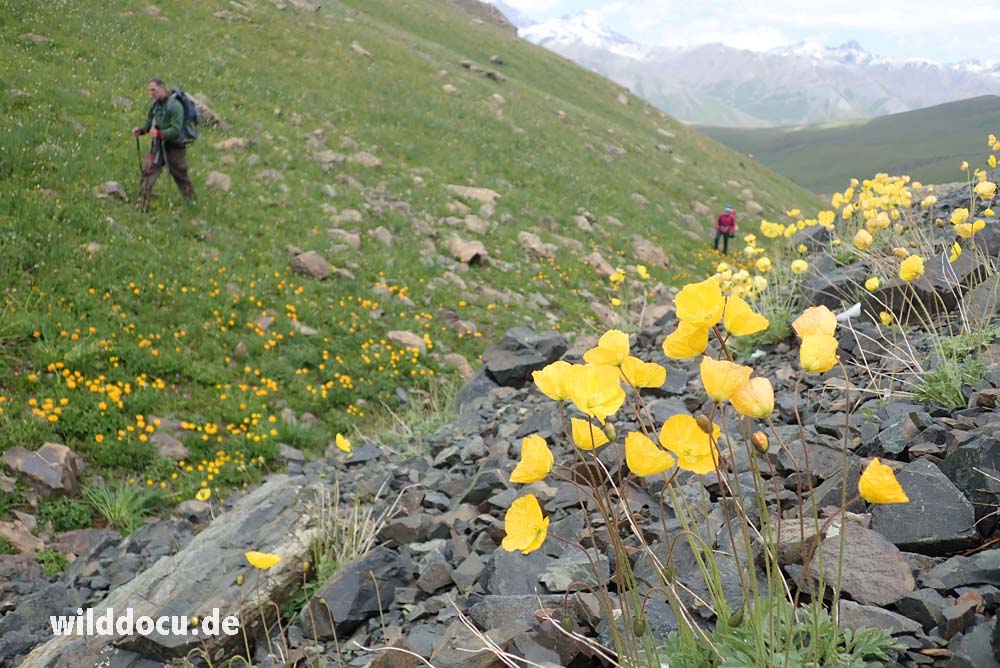
Poppies – presumably Papaver croceum – in the foreground. The area receives plenty of precipitation, therefore plant life is comparably lush.
Steppe and alpine vegetation dominate the landscape. Many threatened animal and plant species, a great number of them endemic, are present in the area with a recent count showing at least 70 mammal, 376 birds, 44 fish species and over 3000 insect species.

… all the more sheep. Nevertheless the study area did not seem as overgrazed as areas further south.
Independence from the Soviet Union was declared on 31 August 1991. Kyrgyzstan is a remarkably stable and democratic country, which as not been plagued by autocratic regimes and religious extremism of the other ex-Soviet „…stan“-countries.
The Kyrgyz people are descendants of several different nomadic Turkish ethnic groups in Central Asia and were first mentioned in writing in 201 BC. Kyrgyzstan’s history is one of Turkish and Mongol, and more recently Soviet and Russian domination.

Diner in the neighbor’s yurt: Overwhelming hospitality is an inseparable part of the Kyrgyz culture.
Research area
The Kyrgyz Ala-Too (also Kyrgyz Alatau, Kyrgyz Range) is a large range in the northern Tien Shan Mountains. The range is situated just south of the capital city of Bishkek, but since there is no direct route to reach the area, it takes you a whole day to get to camp. While there is a great variety of landscapes within the Kyrgyz Range including lakes and forests of larch, cedar, spruce and pine, the study area itself consists of highland steppes, alpine areas and glaciers.
Expedition base
Tent camp of yurt, dome, mess and kitchen, as well as shower and toilet tents. Each team member had his/her own comfortable tent to sleep in.
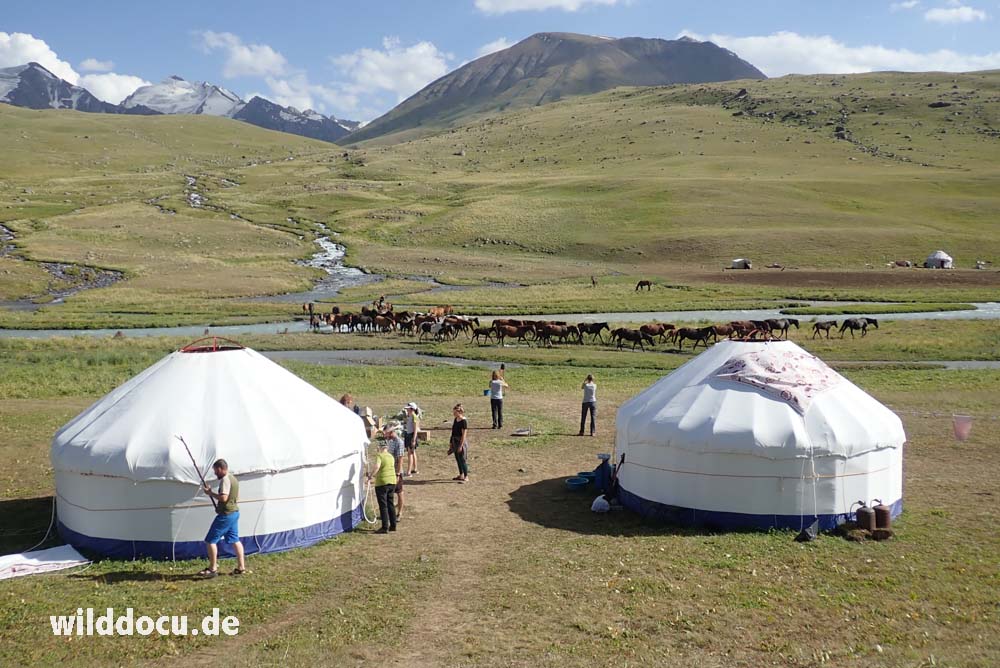
Camp: dining and meeting tent (left), kitchen tent (right). Parts of the bathroom (river in the back) we occasionally shared with a herd of horses. (The horses didn’t mind.)

Proof: David convincingly shows that it can actually be a lot of fun to take a full bath in a glacial stream. Others preferred the shower tents with buckets of warm water.
Weather
High mountain summer weather usually means hot sunshine during the day, but it can turn cold at any time of the year, including brief snow showers – as we experienced on the first day in August.
Team size
We were 14 participants, 1 local scientist, 1 expedition leader and several local helpers.
Skills & prerequisites required
None. You don’t need to be a scientist or have any special qualifications – everyone can take part and there are no age limits whatsoever. All scientific training required is provided on the expedition, during the first couple of days.
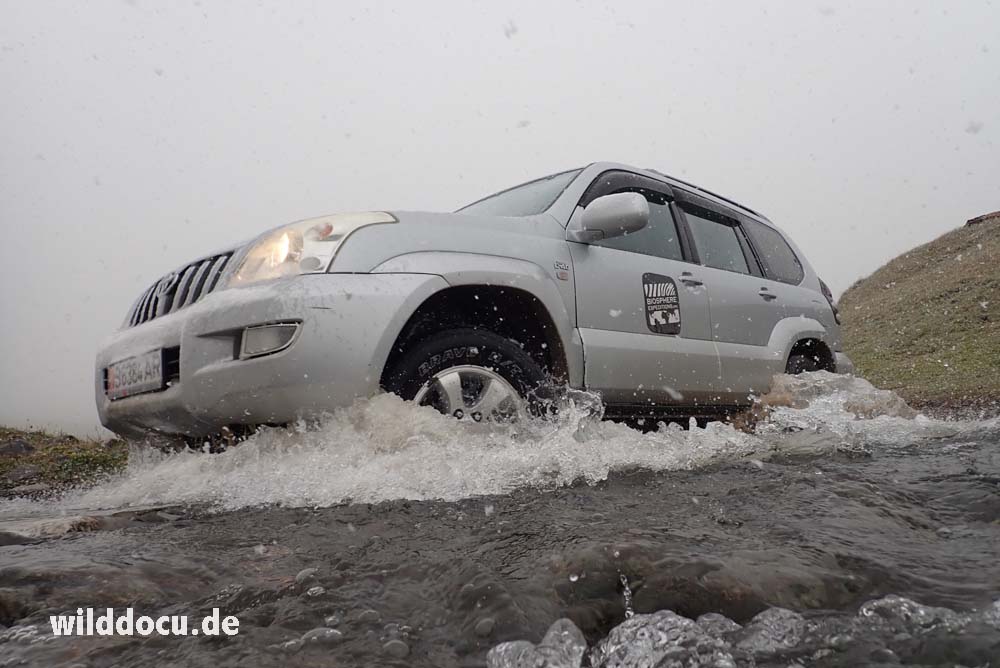
On the first two days we were introduced to the various methods and techniques – including off road driving.
Fitness and safety
To be able to take part in this expedition, you need to be able to walk about 5 to 15 kilometres per day in high mountain terrain of up to 3500 m altitude. Those who felt able to, could also take part in overnight surveys in remote and high locations (three in our group did this once). Those of lower fitness level monitored wildlife near base camp or did vehicle-based work (I did this once and enjoyed it a lot also.) Biosphere Expeditions has full emergency and medical evacuation procedures in place and the expedition leader is a trained wilderness first aider.
Aims & objectives
We estimated snow leopard activity through field signs, by tracking and camera traps. We assessed the status and distribution of their prey species such as the Central Asian Ibex and Long-tailed Marmot. We also surveyed birds and petroglyphs. Furthermore we involved local people in snow leopard conservation through interviews.

Apollos are my favorite butterflies. Never have I seen more than in the Kyrgyz Ranges. We documented them for scientific reasons too.
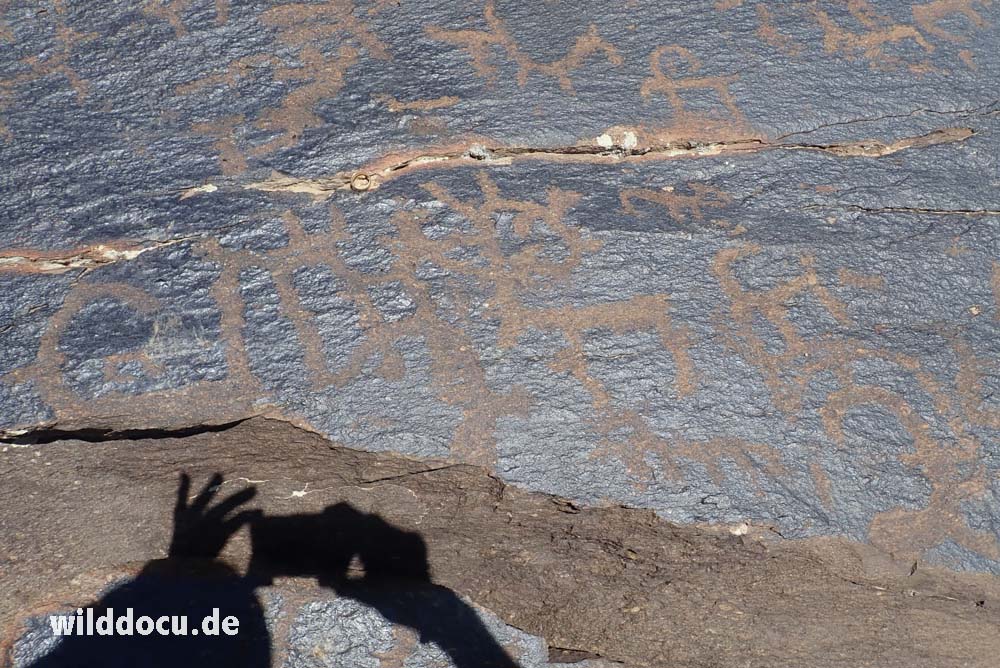
There are hundreds of petroglyphs in the area, all of them depicting animals. We took their positions too. Eventually a map will show the location of each of those rock carvings in an effort to document the cultural wealth of the region also.

The moment of all moments: Bec retrieves the camera trap that will eventually have images of a Snow Leopard on it.
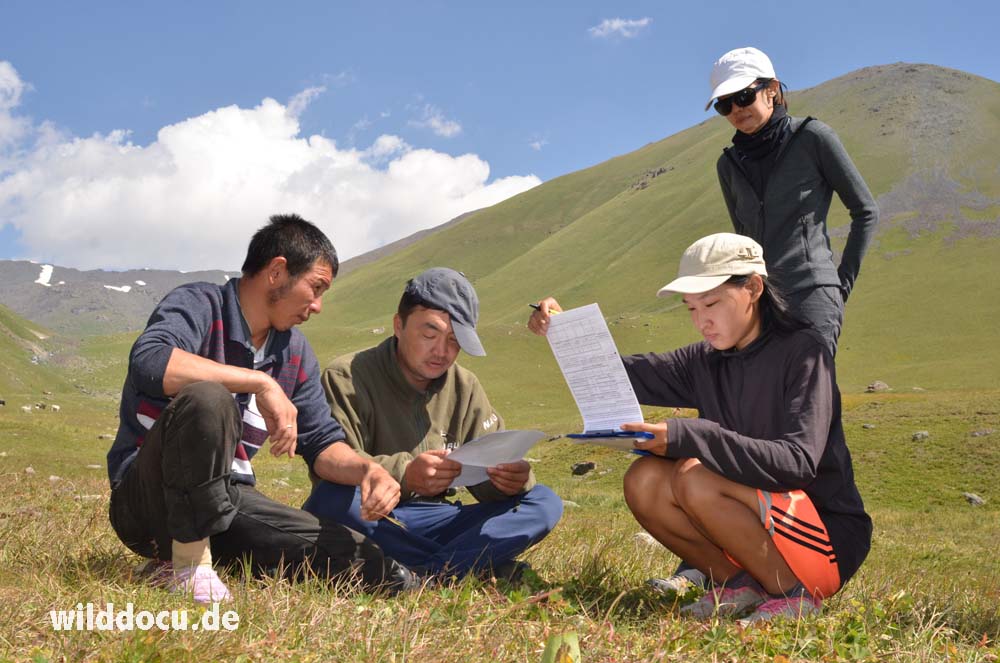
Buyanaa and Jo (to the right) make an interview with a local herder (left), Bec (in the middle) translates.
A typical day
Activities were usually decided the night before and then confirmed in the morning, depending on the weather. The whole set-up of the expedition was quite flexible so that everyone could participate according to the weather conditions, their skills, general fitness and how they felt on the day.

The team starts hiking into a side valley, passing this peculiar plant, belonging to the Daisy family, known to botanists as Schmalhausenia nidulans, an endemite of Central Asia.
The typical day consisted of taking a survey group’s vehicle into the mountains to survey access points and from there search in the mountains and valleys for the key species and their field signs, or placing or checking camera traps. Alternatively you could also visit locals in their homes and interview them to find out about their attitude concerning wildlife and the project.
We generally returned to base camp at around 5 pm. Later food was prepared by our expedition cook. Once during the expedition each person was assigned to do the dishes for the team. During the last night I stayed with two team-mates in the mountains in a bivouac. We were rewarded by the sight of a Asiatic Ibex.

A piece of good luck: On the very last day before departure we found this Asiatic Ibex.
Overall, I enjoyed the trip very much and can really recommend it. If you are interested, check the Biosphere Expeditions website.
Sources
Biosphere Expedions – www.biosphere-expeditions.org/volunteeringinkyrgyzstan
Smith, Andrew T. and Xie, Yan, 2008: A Guide to the Mammals of China. Princeton University Press

